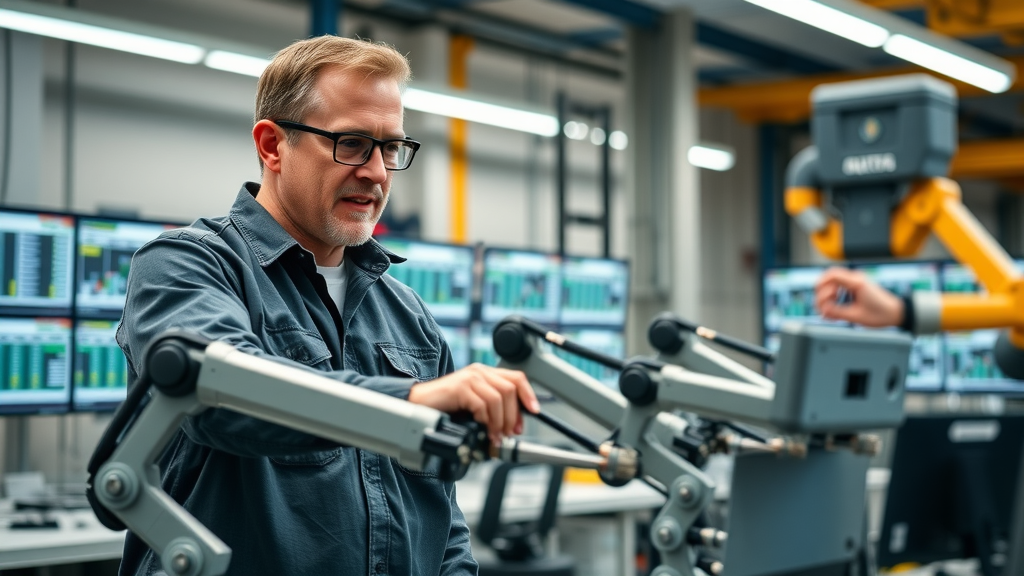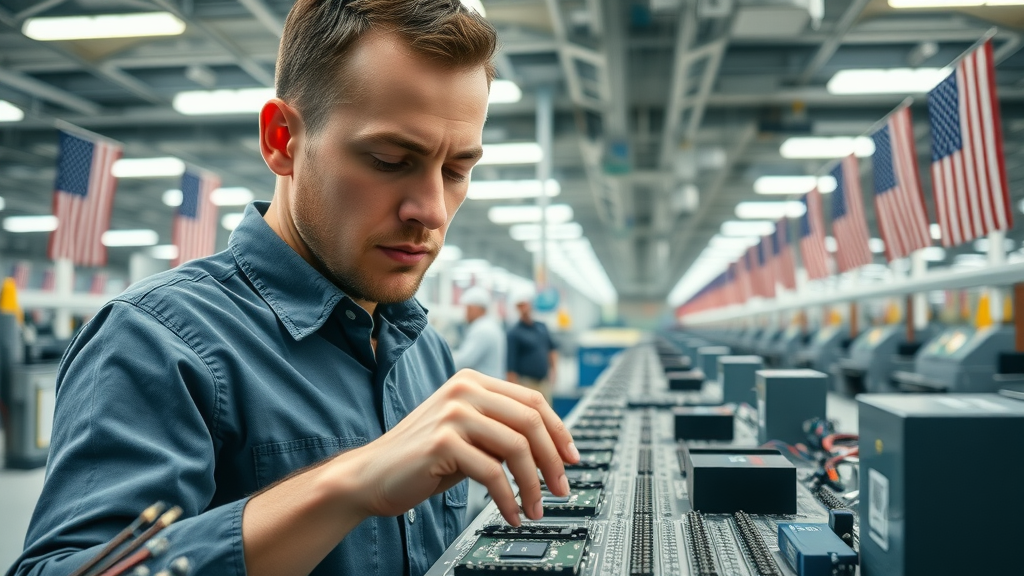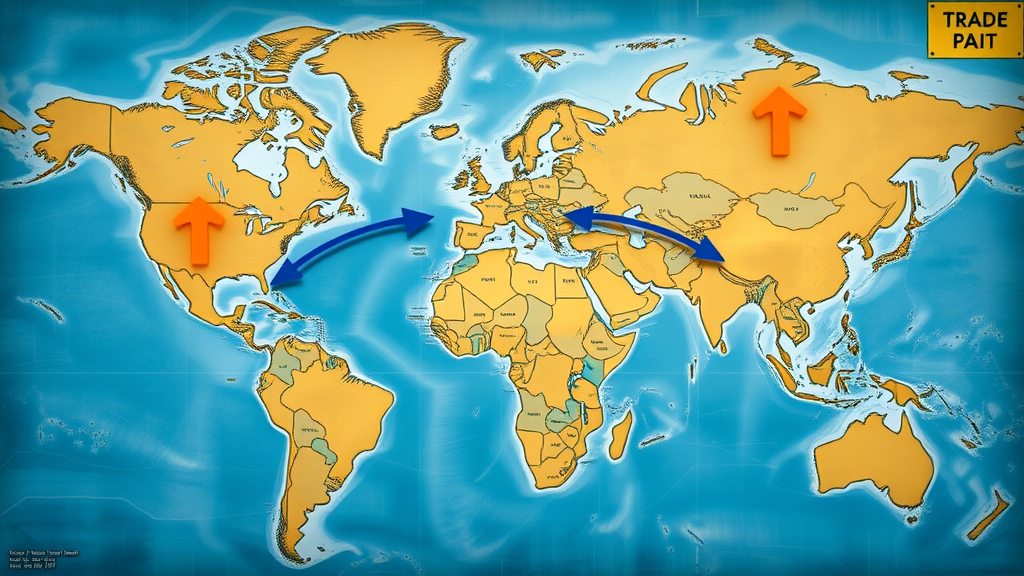Did you know that in 2023, over 60% of electronics leaders cited supply chain risks as a driving force behind their decision to reshore production? That statistic is just the tip of the iceberg. The global electronics industry is undergoing a seismic shift as supply chain disruptions, trade policy changes, and the need for enhanced quality control push manufacturers to bring operations closer to home. With headlines dominated by chip shortages and shipping delays, the case for reshoring electronics manufacturing has never been more urgent—or more compelling. This article explores why moving production back home is more than a trend—it's an essential strategy for growth, stability, and innovation in today’s competitive landscape.
Startling Facts: The Urgent Case for Reshoring Electronics Manufacturing
"In 2023, more than 60% of electronics leaders cited supply chain risks as compelling reasons for considering reshoring electronics manufacturing."
The push towards reshoring electronics manufacturing has accelerated at a breathtaking pace in recent years, largely motivated by dramatic supply chain disruptions and an urgent need for quality control. With global trade instability and the lingering effects of the pandemic, electronics manufacturers are rethinking offshore production, prioritizing reduced risk and greater oversight. The CHIPS Act and other incentive programs in North America have ignited a renaissance in domestic production, making it increasingly attractive for both large and small electronics players. Today, factory floors echo with the sound of advanced manufacturing technologies and robotics—a testament to a new era where control, transparency, and local expertise matter most.
Offshore production once promised cost savings and efficient lead times. However, the reality has seen escalating transportation costs, stricter trade tariffs, and ongoing chain disruptions that often outweigh initial benefits. As the world witnesses a paradigm shift in global supply chain strategies, the case for reshoring electronics continues to strengthen. Industry leaders recognize this moment as a cornerstone for reclaiming quality assurance, optimizing manufacturing processes, and future-proofing their growth amidst volatile conditions.

What You'll Learn About Reshoring Electronics Manufacturing
- The state of the supply chain and how it impacts electronics manufacturers
- Why reshoring electronics is redefining global competition
- Improvements in quality control and intellectual property safeguards
- Key challenges and solutions for electronics manufacturing reshoring
- How foreign direct investment influences industry dynamics
Understanding Reshoring Electronics Manufacturing in a Changing Supply Chain Landscape

How Supply Chain Vulnerabilities Drive Electronics Manufacturing Reshoring
Supply chain fragility is at the center of the reshoring electronics manufacturing movement. In recent years, electronics manufacturers around the globe have endured massive delays, escalating shipping costs, and raw material shortages caused by natural disasters, geopolitical tension, and global health crises. These external shocks exposed the limitations of overseas dependencies. For many, the calculus shifted from chasing the lowest labor cost to reducing risk across every link of the value chain. As a result, electronics companies are aggressively pursuing local manufacturing approaches to control lead times, better manage inventory, and decrease susceptibility to unpredictable events.
By bringing production closer to home, companies can better protect critical processes such as microchip sourcing and circuit board assembly from transcontinental disruptions. This shift is especially important in high-demand industries—like automotive and consumer electronics—where every delay can lead to significant revenue losses and dissatisfied customers. Localizing supply chains allows for rapid adjustment to market needs, more timely delivery, and agility in the face of shifting trade barriers. Ultimately, reshoring electronics manufacturing isn't just about proximity—it's about building resilience and maintaining a competitive edge through strategic control.
The Evolution of Electronics Manufacturing and the Role of Localized Supply Chains
The manufacturing process for electronics has evolved rapidly alongside global digitalization and the proliferation of technology. Where once long, complex supply chains spanned continents, modern electronics companies now recognize the efficiencies gained from localized supply chains. North America, for example, has witnessed a resurgence in advanced manufacturing, robotics, and AI-driven quality assurance thanks to strong public-private initiatives and cross-border collaboration. By investing in domestic production capabilities and cultivating regional supplier networks, organizations can not only optimize lead times, but also fortify intellectual property protection and brand integrity.
Furthermore, the emergence of new manufacturing technologies—from additive manufacturing to industrial IoT—has raised the bar for what’s possible in local factories. These innovations allow manufacturers to adapt processes on the fly, support smaller batch sizes, and implement rigorous quality control protocols that would have been near-impossible in sprawling, offshore setups. In essence, the evolution towards localized supply chains aligns with a renewed focus on quality, agility, and customer-centric delivery, making reshoring a smart, future-proof strategy for electronics manufacturers.
The Benefits of Reshoring Electronics Manufacturing: From Quality Control to Growth

Quality Control Advantages When Reshoring Electronics
One of the most compelling advantages of reshoring electronics manufacturing is the dramatic improvement in quality control. By keeping production within North American or domestic borders, manufacturers can conduct real-time oversight throughout the entire manufacturing process—catching defects early, tracking compliance, and implementing continuous improvement protocols that support long-term quality assurance goals. This proximity makes it possible to address quality concerns with speed and precision, which is impossible to guarantee when operating through a labyrinthine overseas network. Localized factories are empowered to customize solutions to unique product requirements and consumer preferences, which is vital in the rapidly evolving electronics industry.
Additionally, manufacturers report higher rates of on-time delivery and reduced scrap rates, thanks to integrated quality checks and fast feedback loops between design, production, and end users. This hands-on approach not only elevates product standards, but also builds a culture of accountability and trust that pays dividends with both regulators and customers. For electronics manufacturers determined to maintain a reputation for innovation and reliability, local quality control is a powerful differentiator that directly impacts the bottom line.
Reshoring Electronics and Intellectual Property Protection
In an era when intellectual property (IP) underpins the value of most electronics companies, reshoring production is a strategic move to strengthen IP protection. Offshore manufacturing environments have historically posed risks of copycat production, patent infringements, and data leaks. By moving operations to jurisdictions with robust legal frameworks—like North America—companies can better safeguard proprietary designs, circuit board layouts, and sensitive process know-how. Local legal experts, secure digital systems, and strong enforceability of IP law all reinforce this vital advantage.

Moreover, localized manufacturing processes make it more difficult for malicious actors to access trade secrets, and enable rapid legal recourse when necessary. With electronics manufacturing increasingly relying on advanced manufacturing technologies and closely guarded innovations, the ability to retain operational control over IP is essential. For companies focusing on high-value, next-generation electronics, the assurance of effective IP protection is often cited as a primary consideration for reshoring.
Cost, Lead Time, and the Business Case for Electronics Manufacturing Reshoring
While labor costs remain a key factor in business decisions, the true calculus of reshoring extends far beyond wages alone. Manufacturers are now examining total cost of ownership, which includes supply chain risks, fluctuating lead times, and costs related to late deliveries or quality failures. Modern reshoring initiatives are leveraging automation, robotics, and lean manufacturing processes to dramatically close the labor cost gap with overseas counterparts. As a result, businesses are seeing not only reduced transportation times—sometimes by as much as 75%—but also a tighter grip on input costs and inventory management.
"Reshoring can cut transportation times by up to 75%—but it’s about more than speed; it’s about controlling your future."
The shorter lead times and improved reliability made possible by local production mean companies can react with agility to sudden demand spikes or supply shocks. With the support of new incentives like the CHIPS Act, the investment required for reshoring is increasingly justified by long-term stability and growth. The focus now is on harnessing operational control, reducing global supply chain risks, and supporting a business case anchored in sustainability, predictability, and value creation.
Key Drivers: Why Electronics Manufacturers Are Returning Home

Foreign Direct Investment Trends Impacting Reshoring Electronics Manufacturing
Foreign direct investment (FDI) has become a cornerstone in the resurgence of domestic electronics manufacturing. As countries compete to attract high-tech industries, government incentives and investor confidence in stable regulatory environments have prompted major electronics players to increase capital outlays for advanced domestic factories. The inflow of foreign direct investment doesn’t just bring financial capital; it also boosts local expertise, stimulates R&D, and forges closer relationships between global corporations and regional suppliers. This trend is evident in the rising number of high-profile plant announcements and cross-border collaborations that fuel innovation clusters across North America.
As FDI strengthens, local economies benefit from job creation and the transfer of advanced manufacturing skills. This virtuous cycle increases the overall competitiveness of the sector and encourages more electronics manufacturers to consider reshoring as a viable long-term solution. By aligning investment strategies with reshoring objectives, companies secure technology upgrades, leading-edge processes, and the agility required in today’s fast-moving markets.
Tariffs, Trade Policy, and Supply Chain Strategy Shifts

Global trade dynamics are shifting rapidly, leaving electronics manufacturers under pressure to adapt. The imposition of tariffs, renegotiation of trade agreements, and the uncertainty of ongoing geopolitical disputes have all complicated the economics of offshore production. Tariff hikes on imported electronics components have directly eaten into profit margins, while unpredictable customs regulations often cause critical delays. To navigate these challenges, companies are devising new supply chain strategies that reduce dependence on a single region or trading partner.
These proactive approaches include diversifying supplier bases, relocating parts of the value chain to more favorable jurisdictions, and accelerating the adoption of localized manufacturing models. Such measures not only minimize exposure to trade policy swings, but also reinforce the ability to respond dynamically to global events. As trade incentives align with the goals of reshoring, the strategic logic for domestic production becomes ever more compelling for electronics manufacturers seeking both cost efficiency and supply chain control.
Economic and Environmental Sustainability Benefits
Reshoring electronics manufacturing is also a lever for broader economic and sustainability gains. From an economic standpoint, bringing production home means new jobs, expanded local supplier networks, and reinvestment in regions that may have struggled with industrial decline. Economies benefit not only from the direct employment opportunities but from the innovation and tax base bolstered by revitalized electronics sectors. These localized benefits are magnified by foreign direct investment that brings expertise and capital to emerging tech hubs.
On the environmental side, reshoring leads to reduced transportation emissions, more energy-efficient factories built to the latest standards, and streamlined logistics. With consumer and regulatory scrutiny mounting, companies adopting sustainable manufacturing processes stand to gain favor both in the marketplace and with policymakers. The move towards greener, smarter local factories underpins a new generation of electronics manufacturing that is as nimble as it is conscious—a dual imperative for long-term business relevance.
Challenges Facing Reshoring Electronics Manufacturing and How to Overcome Them

Addressing Labor Shortages and Workforce Development in Electronics Manufacturing
Despite clear advantages, reshoring electronics manufacturing is not without its hurdles. Chief among these are labor shortages and a skills gap, particularly in advanced manufacturing and automation disciplines. As factories become more reliant on cutting-edge technology—from AI-driven production lines to precision robotics—the need for a highly trained workforce intensifies. Many regions are now investing heavily in workforce development initiatives, including public-private partnerships, apprenticeships, and STEM education programs designed to cultivate a new generation of electronics engineers and technicians.
Proactive training strategies are turning these workforce challenges into opportunities, catalyzing local employment and building pipelines of skilled talent that directly benefit the industry. Companies embracing lifelong learning and upskilling benefit from increased employee retention, reduced recruitment costs, and a culture of continuous improvement. In this way, workforce development is central not just to overcoming immediate labor shortages but to supporting the sustainable growth of reshored electronics manufacturing for decades to come.
Modernizing Facilities and Upgrading Automation

Modern electronics manufacturing requires significant capital investment in updated facilities, automation, and smart factory technologies. A central challenge for companies considering reshoring is balancing the upfront costs of new equipment and infrastructure with projected long-term gains. The good news is that automation can rapidly close the labor cost gap with overseas production, allowing domestic manufacturers to maintain competitive pricing while delivering higher quality.
Incentive programs—such as those offered by the CHIPS Act—are currently helping to offset these investments, making it feasible for both large enterprises and smaller electronics manufacturers to modernize. With the growing accessibility of robotics, AI quality assurance, and digitally connected “Industry 4.0” platforms, companies that take the leap now stand not only to improve efficiency and consistency, but also to position themselves as pioneers in the next era of global electronics production.
Balancing Direct Investment Needs with Supply Chain Flexibility
Success in reshoring electronics depends on managing the balance between significant direct investment and the need for supply chain flexibility. As companies retrofit or build new manufacturing facilities, there is a parallel imperative to design supply chains that can pivot quickly—both to meet unpredictable customer demands and to adjust to global economic or policy shifts. This means nurturing local supplier networks alongside strategic relationships with international partners, all while leveraging digital tools to improve visibility and responsiveness.
| Factor | Offshore | Reshoring |
|---|---|---|
| Cost (Labor/Transport) | Lower labor cost, higher and rising transport costs | Higher labor cost, lower transport and risk costs due to automation |
| Control | Reduced oversight, delayed issue response | Hands-on management, rapid decision-making |
| Lead Time | Longer, prone to disruption | Shorter, more predictable |
| Quality Control | Limited, slow feedback | Integrated, continuous improvement |
| IP Protection | Riskier, weaker legal enforcement | Stronger, proactive safeguards |
| Supply Chain Risks | High, exposed to global events | Low, localized resilience |
The Future of Reshoring Electronics Manufacturing: Trends & Predictions
- Rising tech hubs and local innovation clusters
- Shifts in consumer demand for transparency
- New roles for foreign direct investment and public-private partnerships
Looking forward, reshoring electronics manufacturing will continue to shape new industrial landscapes. Cities and regions are actively positioning themselves as technology hubs, enticing manufacturers with skilled workforces, local R&D capacity, and business-friendly policies. Consumer preferences for transparency and sustainability are also forcing brands to embrace traceable, ethically produced electronics—further bolstering the move towards local manufacturing. Coupled with continued growth in foreign direct investment and innovative public-private partnerships, the outlook for reshoring remains robust, promising both resilience and competitive advantage in a fast-changing market.
People Also Ask About Reshoring Electronics Manufacturing
Why are companies considering reshoring electronics manufacturing now?
Supply chain disruptions, quality concerns, and new trade incentives are driving companies to explore reshoring electronics manufacturing as a strategic imperative.
How does reshoring electronics improve quality control?
Local manufacturing enables closer oversight, real-time feedback on quality, and immediate remediation of issues for electronics manufacturers.
What are the biggest obstacles in reshoring electronics manufacturing?
Challenges include labor costs, skills gaps, and significant required investments in modern facilities and automation.
FAQs on Reshoring Electronics Manufacturing
- How long does it take to reshore electronics manufacturing operations?
- Is reshoring cost-effective in the long term?
- What is the role of foreign direct investment in reshoring?
- Can small electronics manufacturers benefit from reshoring?
Key Takeaways: Reshoring Electronics Manufacturing's Strategic Value
- Reshoring electronics manufacturing strengthens supply chain resilience.
- Enhanced quality control and IP protection are major bonuses.
- Strategic foreign direct investment is fundamental to successful transitions.
- Stay agile: Watch shifts in global trade and supply chain policy.
Conclusion: Unlocking Growth—Make the Business Case for Reshoring Electronics Manufacturing
"Reshoring electronics manufacturing isn’t just a trend—it’s a necessity for stability, quality, and futureproof growth."
To unlock growth and secure your competitive edge, start exploring reshoring electronics manufacturing—as the industry evolves, those who adapt first will lead.
Take Action: Stay Ahead of Reshoring, Tariffs, and Global Supply Chain Trends
Manufacturer don't miss out! Stay informed on global trade shifts-tariffs, reshoring, and supply chain updates could reshape your strategy. Subscribe to Global Trade News for Latest updates. Call 203-271-7991 today.
Reshoring electronics manufacturing offers numerous advantages, including enhanced supply chain resilience, improved quality control, and better intellectual property protection. For a deeper understanding of these benefits, the article “Resurgence of reshoring in electronics manufacturing” provides valuable insights into how companies are mitigating risks and optimizing operations by bringing production closer to home. (astutegroup.com) Additionally, “Reshoring the Electronics Industry” discusses the environmental and economic impacts of reshoring, highlighting its role in reducing carbon footprints and strengthening local economies. (suntsu.com) If you’re serious about leveraging reshoring for growth and stability, these resources will offer comprehensive perspectives to inform your strategy.
 Add Row
Add Row  Add
Add 




Write A Comment